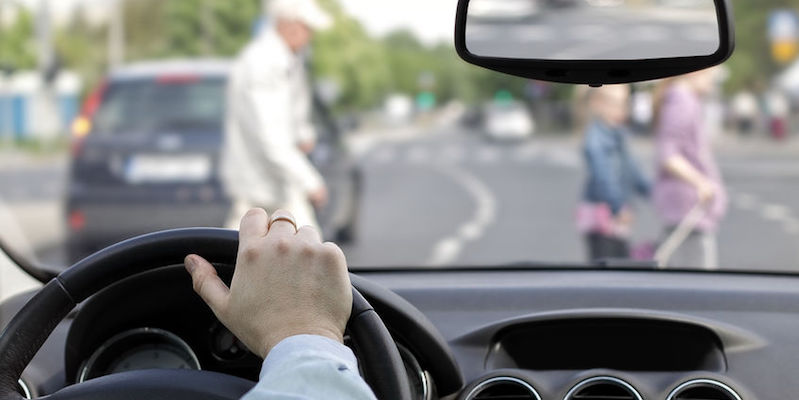According to one report, Americans are 7.2 times more likely to die as a result of a pedestrian-vehicle accident than from a natural disaster.
Severity of Injuries Related to Various Factors
America’s streets aren’t getting any safer for pedestrians. Over the last 10 years, the number of pedestrians struck and killed has increased by at least 35 percent, according to “Dangerous by Design,” a 2019 report published by Smart Growth America.
The report stated that 49,340 pedestrians walking on streets were killed between 2008 and 2017. During this same time period, Americans were 7.2 times more likely to die while walking than from a natural disaster. Florida was considered the most dangerous state for walking in the U.S. during the designated time frame, when 5,433 pedestrian fatalities occurred.
According to data compiled by the National Highway Traffic Safety Administration, most pedestrian deaths occur in urban areas, non-intersection locations, and after dark. Older adults, people of color, children under the age of 15, and pedestrians walking in low-income areas were found to be most at risk. Alcohol involvement on the part of drivers and/or pedestrians was reported in approximately 48 percent of the traffic accidents that claimed the lives of pedestrians in 2015.
Injuries Associated With Pedestrian Accidents
A pedestrian who is hit by a vehicle is at a distinct disadvantage in terms of force, size, and weight, particularly if the vehicle is traveling at a high rate of speed. Some of the injuries pedestrians can suffer include:
- Soft tissue injuries. Bruises, lacerations, tears, dislocations, strains, and sprains are soft-tissue injuries that can resolve with limited medical intervention or require weeks, months, or even years of treatment, depending on the severity of the injury.
- When the physical force exerted on a bone is stronger than the bone itself, a fracture occurs. While fractures are usually treatable, they can still lead to chronic pain and other medical problems.
- Head trauma. The force by which the pedestrian is struck by an automobile can lead to a variety of serious head injuries, including a concussion, fractured skull, bleeding in the brain, and traumatic brain injury.
- Internal bleeding. When blood vessels or internal organs suffer damage, internal bleeding can occur, potentially leading to organ failure, shock, and even death.
- Pelvic injuries. According to the International Research Council on Biomechanics of Injury, older people and females are at the greatest risk of sustaining pelvic injuries in a pedestrian accident.
- Spinal injuries. A sudden traumatic blow to the spine can fracture or dislocate the vertebrae, disrupting the signals transmitted between the brain and the body and leading to lifelong damage.
- Emotional trauma. Not all injuries sustained by pedestrians are physical in nature. Some people suffer severe psychological distress after being struck by a motor vehicle, an injury that can be long-lasting and extremely painful in nature.
- Death. Because of the sheer size of vehicles and the general lack of protection for the person walking, pedestrians who are struck by motor vehicles are at high risk of death.
The severity of pedestrian injuries is dependent on many factors, including vehicle speed, the angle of the vehicle’s impact with the pedestrian, the part of the body that comes into contact with the vehicle, and vehicle design.
If you sustained serious injuries while walking as a pedestrian, contact Colorado personal injury attorney Dan Rosen to schedule your free initial consultation to discuss your legal recourse.

